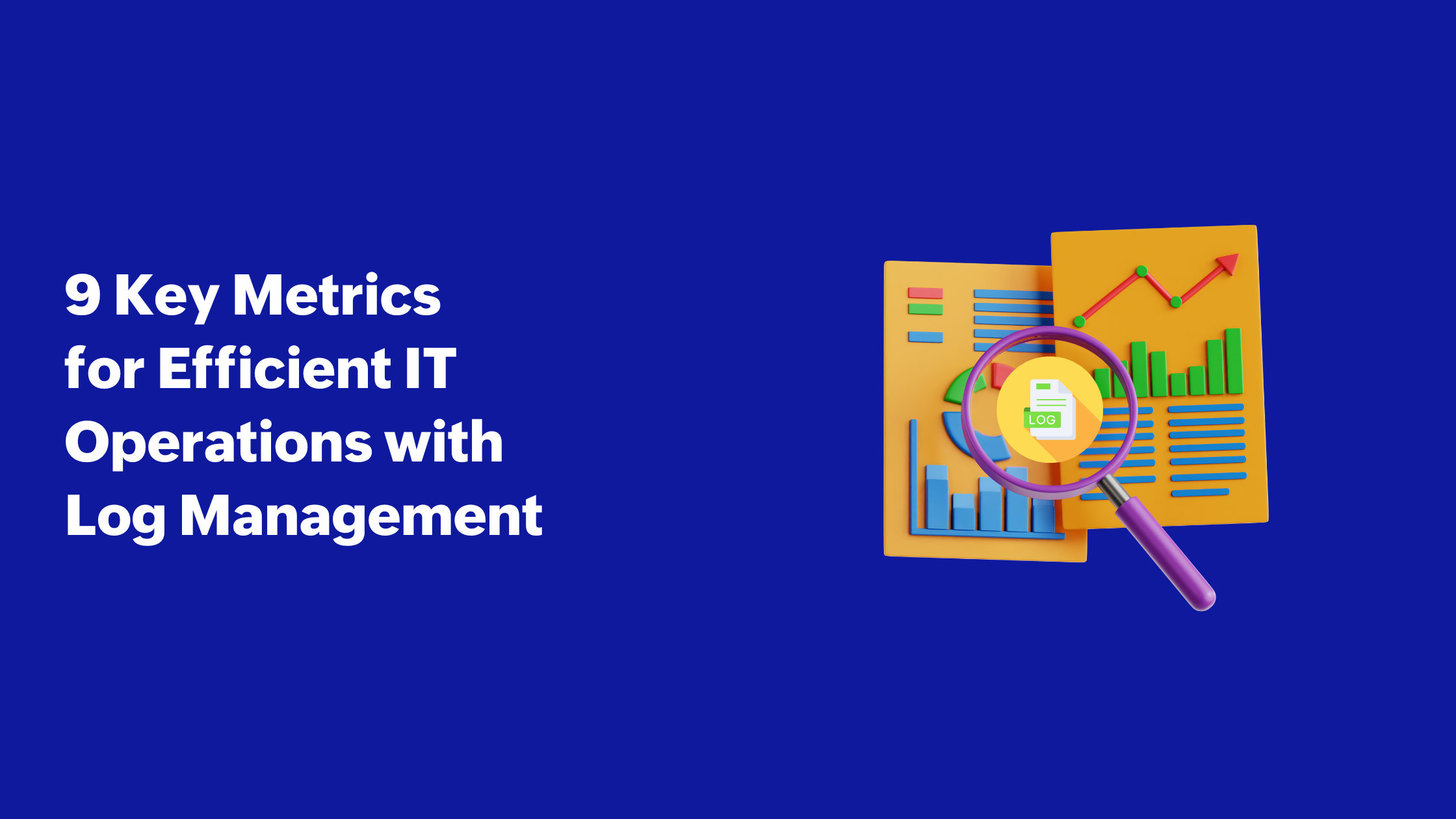9 essential metrics to track for effective IT operations with log management tools

Monitoring the correct metrics is crucial for efficient IT operations, as it ensures the smooth functioning of an organization's infrastructure. One crucial aspect of this process is log management, which empowers IT teams to address critical aspects of IT infrastructure, including performance, availability, security, resource usage, and integration.
Below is a breakdown of the nine key metrics every IT team should track, categorized into performance, availability, security, resource usage, and integration, along with how log management tools simplify this process.
Ensure applications and systems operate at their best.
1. Application response time
Why it matters: Slow applications can frustrate users and impact productivity. Fast response times are critical for ensuring user satisfaction and smooth operations.
How logs help: Access or transaction logs highlight delays within the application life cycle.
Example: Nginx access logs provide insights into response times, helping diagnose and resolve server-side bottlenecks efficiently.
Why it matters: Inefficient database queries slow down applications, especially during high-demand periods.
How logs help: Slow query logs capture execution times, pinpointing queries that require optimization.
Example: MySQL slow query logs help identify queries that take too long to execute or fetch excessive rows. By analyzing these logs, teams can pinpoint inefficient queries and optimize them for better database performance, reducing server load and improving response times.
Maintain uninterrupted uptime and reliability.
Strengthen defenses through continuous monitoring.
5. Authentication and access logs
Why it matters: Monitoring user access is vital for system security and compliance.
How logs help: Access logs provide insights into login attempts, highlighting unauthorized access attempts.
Example: Auth0 logs track failed and successful login attempts, ensuring secure access management.
6. Log volume trends
Why it matters: Sudden spikes in log data may signal security incidents, such as DDoS attacks or misconfigurations.
How logs help: Analyzing trends in log volume can uncover anomalies or threats early.
Example: IIS access logs help detect an increased number of failed requests with status code 400, often indicative of malicious activity or malformed requests.
Optimize resources for efficiency and cost-effectiveness.
7. Server resource utilization
Example: Tomcat access logs capture the number of requests served by each server. A sudden surge in requests, coupled with increased response times, signals the need to assess server load and provision extra resources to ensure optimal performance.
- Monitor logs from a centralized location.
- Receive real-time alerts for proactive troubleshooting.
- Customize dashboards for tailored reporting.
- Scale monitoring as their business grows.
Proactive log management not only enhances operational efficiency but also aligns IT infrastructure performance with business goals.